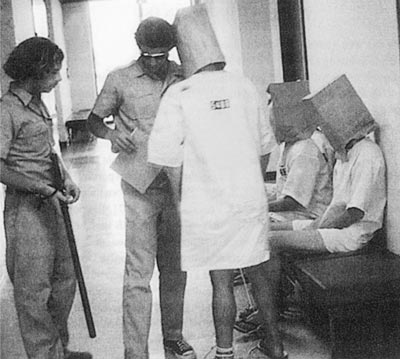 Aim: How do we analyze the causes of the Bystander Effect, including "diffusion of responsibility"?
Aim: How do we analyze the causes of the Bystander Effect, including "diffusion of responsibility"?
Quick Write: Complete one of the two following scenarios.
1. In middle of the day a man climbs on the railing of a bridge high above a river. He sits on the railing muttering things to himself. A crowd begins to gather number and motorists stop on the bridge to watch him.
In your opinion what is the likelihood that an onlooker would help in this situation? Why? Rate from 1-5, where “1″ is very likely and “5″ is very unlikely
Why is this so?
What factors do you think would influence whether an onlooker would help or not help? List the following:
5 Factors that would influence an onlooker to help.
5 Factors that would influence an onlooker not to help.
2. At 1:00 a.m. outside a tavern several men are arguing. Two of the men are shouting loudly at a third man who appears to be backing away from them. The two men move toward the lone man and start waving their arms as he backs up against a wall. A group of people exiting the bar notice the situation.
In your opinion what is the likelihood that an onlooker would help in this situation? Why? Rate from 1-5, where “1″ is very likely and “5″ is very unlikely.
What factors do you think would influence whether an onlooker would help or not help? List the following:
5 Factors that would influence an onlooker to help.
5 Factors that would influence an onlooker not to help.
Reading Questions
1. What happened to Kitty Genovose?
2. Why was this story so shocking at the time
3. Why do you think so many people failed to respond?
4. Do you think similar tragedies happen today?
The Bystander Effect - Social psychological phenomenon in which individuals do not offer help in an emergency situation when others are present.
The term bystander effect refers to the phenomenon in which the greater the number of people present, the less likely people are to help a person in distress. People conform to the behavior of the people around them. When an emergency situation occurs, observers are more likely to take action if there are few or no other witnesses.
Kitty Genovese was stabbed to death in 1964. The murder continued for half an hour while thirty-eight bystanders watched without intervening or notifying the police.
Most famous case of the bystander effect, also known as the "Genovese Syndrome."
 |
| Kitty Genovese |
Explanations for the Bystander Effect
There are two major factors that contribute to the bystander effect. First, the presence of other people creates a diffusion of responsibility (when everyone in a group assumes that somebody else will act, but no one does; responsibility is spread out amongst a group so no one individual feels it). Because there are other observers, individuals do not feel as much pressure to take action, since the responsibility to take action is thought to be shared among all of those present.
The second reason is the need to behave in correct and socially acceptable ways. When other observers fail to react, individuals often take this as a signal that a response is not needed or not appropriate. Other researchers have found that onlookers are less likely to intervene if the situation is ambiguous. In the case of Kitty Genovese, many of the 38 witnesses reported that they believed that they were witnessing a “lover’s quarrel,” and did not realize that the young woman was actually being murdered.
Watch the video about the bystander effect by clicking here. Please note the additional aspects that the video brings to light about our inclination to help strangers.
Final Reflection: After viewing the video: Write a two-paragraph summary of the bystander effect. Your response should include:
- a definition of the bystander effect
- an explanation of how the uninvolved bystander is a conformist
- discussion of the Kitty Genovese case
- discussion of what the video adds to our understanding of the Bystander Effect
- a story about how, in some instances, people do get involved and intervene. You’ll have to do your own research or discuss a personal example.
- How can knowing about the Bystander Effect and the Kitty Genovese incident be useful to us?
Remember, you should write a well-developed response with a topic sentence, supporting details, and a conclusion.
***Don't forget to complete and turn in your "Six Elements of Engagement Daily Self-Tracker" before leaving class.
****Always check Engrade for your up-to-the-minute progress in this class.****
 Aim: How do we analyze the concept of crowd manipulation and relate it to conformity?
Aim: How do we analyze the concept of crowd manipulation and relate it to conformity? 
















